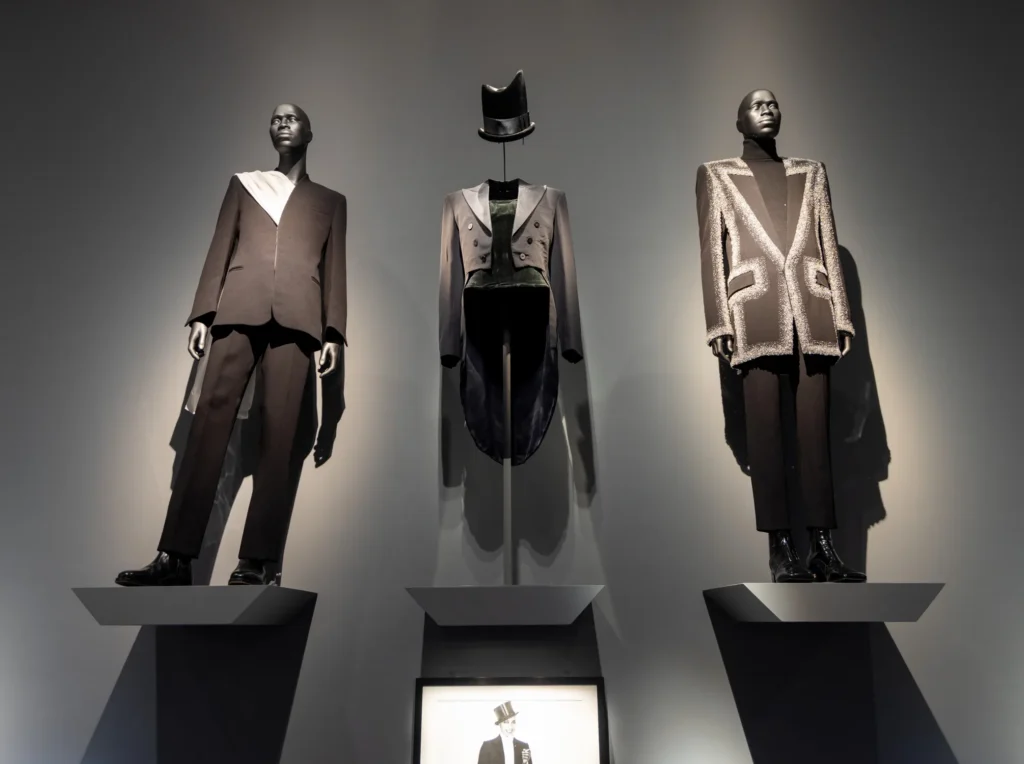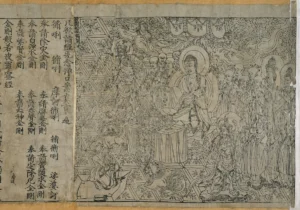In the hushed halls of the Metropolitan Museum of Art, where centuries of art and artifact quietly converse across eras, a new exhibition has emerged that reshapes this ongoing dialogue. Titled “Superfine: Tailoring Black Style,” this 2025 presentation is not just a fashion show, nor merely a costume exhibition. It is a manifesto in fabric, a poetic investigation of Black sartorial identity, and a meticulous exploration of tailoring as a site of cultural negotiation and empowerment.
This groundbreaking showcase brings together the works of contemporary designers such as Maximilian Davis and Olivier Rousteing, alongside accessories from visionary milliner Philip Treacy. Their creations do not simply hang on mannequins—they stand as sculptures, each garment a monument to heritage, resistance, and transformation.
Historical foundation: A lineage of resistance and elegance
To understand the significance of “Superfine,” we must trace the lineage of Black tailoring traditions back through time. From the sharply cut zoot suits of the 1940s that became a symbol of defiance and individuality among Black and Latin youth in America, to the dignified Sunday best church ensembles, clothing has long been a vehicle for reclaiming dignity and asserting selfhood in the face of systemic marginalization.
In the 19th century, freedmen and women in America often embraced fine tailoring as a means to express newfound status and identity, countering the grotesque stereotypes imposed upon them. Suits became armor and language—a silent code among those who understood the stakes of appearing “respectable” in a world eager to deny them humanity.
Literature and the symbolic power of clothing
In literature, clothing is a recurrent metaphor for transformation and self-creation. James Baldwin wrote powerfully about appearances and perception in his essays and novels, underlining how clothes could shield or expose Black individuals to the gazes and judgments of society. The poetry of Derek Walcott and the sharp essays of bell hooks often examine attire as both cultural inheritance and contemporary expression.
Through this lens, the garments in “Superfine” are not mere fashion artifacts. They are texts to be read, layered with meaning, aspirations, and historical echoes. The stark lighting and minimalist display at the Met accentuate this literary quality, turning each piece into a narrative fragment.
Maximilian Davis: The future through clean lines
Maximilian Davis’s 2023 ensemble stands stage left in the exhibition image—sleek, minimal, with a subtle asymmetry that suggests both refinement and subversion. Davis, who rose to prominence for his deft blending of Caribbean heritage and London tailoring traditions, embodies a new generation of designers who see fashion as both a mirror and a tool for reimagining the future.
His approach to clean lines and subtle detailing reflects a modernist aesthetic, yet it pulses with references to diasporic histories and identities. In Davis’s hands, tailoring becomes an invitation: to inhabit elegance, to rewrite narratives, to embody pride.
Philip Treacy: The top hat reimagined
At center stage floats Philip Treacy’s top hat, created between 2020 and 2021. Known for pushing the boundaries of millinery, Treacy’s contribution to “Superfine” acts almost like a punctuation mark—a sharp accent in a symphonic sentence. The top hat, historically associated with European aristocracy and colonial power, is transformed here into an artifact of reclamation.
By placing the hat above a sharply tailored, almost phantom-like tuxedo jacket, the piece challenges visitors to reconsider ideas of authority and legacy. The hat becomes an emblem not of subjugation, but of redefined sovereignty and self-possession.
Olivier Rousteing: Baroque edges and contemporary flamboyance
On the right stands Olivier Rousteing’s 2024–25 suit, outlined with an almost baroque, shaggy trimming. Rousteing, creative director at Balmain, is celebrated for merging opulence with a fiercely modern sensibility. His approach here references 18th-century court dress, yet the silhouette remains defiantly contemporary.
The use of exaggerated trim and strong shoulder lines invokes power dressing from the 1980s but updated with a sculptural touch that signals both protection and flamboyant joy. In Rousteing’s hands, tailoring is a celebration of individuality and spectacle—an unapologetic declaration of presence.
Recent trends: Tailoring in the age of identity
“Superfine” arrives at a moment when the conversation around identity, especially in fashion, has become ever more urgent and layered. Recent years have seen a resurgence in bespoke tailoring and craftsmanship, driven in part by a rejection of mass-produced fast fashion. Simultaneously, there has been an increased focus on the intersection of race, culture, and style, with Black designers, stylists, and historians reclaiming and rewriting narratives long marginalized by mainstream fashion institutions.
Contemporary stars like Kerby Jean-Raymond, Telfar Clemens, and Grace Wales Bonner exemplify this move toward integrating cultural storytelling into luxury design. In this context, “Superfine” serves not only as a retrospective or a celebration but also as a critical intervention—a site where new ideas are stitched together in real time.
The exhibition experience
The installation at the Met is as much about atmosphere as about individual pieces. Visitors encounter each look presented almost as a floating apparition, set against stark grey walls and dramatic lighting. This staging emphasizes the sculptural qualities of the clothing, allowing silhouettes and space to conjure as active connecters in the storytelling.
Rather than overwhelming visitors with historical footnotes or dense textual panels, the exhibition invites close looking and contemplation. Each garment holds space for viewers to bring their own associations, memories, and emotional responses.
The literary parallel: garments as characters
It is tempting to view each ensemble in “Superfine” as a character in a larger novel—a chorus of voices that collectively articulate a shared journey of struggle, creativity, and transcendence. Just as in Toni Morrison’s novels, where physical objects carry spiritual and emotional weight, here fabric and form embody histories too complex to be fully told in words alone.
By placing these characters together in one room, “Superfine” offers not a linear narrative but a layered, polyphonic conversation across generations and geographies.
Impression: Toward a more inclusive future
“Superfine: Tailoring Black Style” is more than an exhibition; it is a proposition. It asks what it means to dress, to adorn oneself, to step into public space as a statement of identity and resistance. It suggests that fashion, at its most profound, is neither frivolous nor purely decorative—it is a living archive of human experience.
At a time when museums grapple with issues of representation and restitution, “Superfine” points toward a future where marginalized histories are not simply included but centered, celebrated, and expanded. Through tailoring, a discipline so often tied to rigidity and tradition, the exhibition offers a vision of style as freedom, as rebellion, and ultimately as an act of love.
The garments on view are more than clothes; they are conversations, manifestos, and dreams stitched into reality. As visitors step back into the New York streets, the echoes of this dialogue linger, inspiring new ways of seeing and being seen in the world.
No comments yet.








